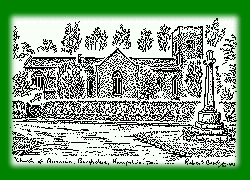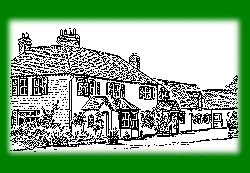
Burghclere has been occupied since prehistoric
times, indicated by several flint implements and other
archaelogical remains that have been found. The history of
Burghclere includes several very early grants of land at Clere to
the church in Winchester. the Domesday Survey mentions a church
at Burgclere, and lands at Clere (possibly Burghclere combined
with Highclere) are described as being held by the bishop for the
support of the monks at Winchester.
The deserted mediaeval village of Old Burgclere can be seen as
irregularities in the ground, as most traces have been destroyed
by ploughing. The village had its own church, and the manor house
was a good example of an early fourteenth century aisled hall
building. The mediaeval Hospital of St. Cross is thought to have
stood on the main Winchester to Oxford road, although the exact
site is not known. The twelfth century church of All Saints at
Old Burghclere was restored in 1861 but has kept many twelfth and
thirteenth century features.
| The manor of Burghclere remained in possession of the See of Winchester until 1551, when Edward IV received it in exchange for other lands. It was granted to William FitzWilliam and remained in this family until acquired by Richard Kingsmill in 1577, after which it passed by descent to the Lucys. In 1671 the manor was conveyed to Sir Robert Sawyer and thereafter descended through his daughter to the Earl of Pembroke. |  |
 |
Burghclere was a quiet village admired by Dean Field, Chaplain to Elizabeth I and rector here at the end of his life. It now has a twentieth century shrine, the Oratory of All Souls, also known as the Sandham Memorial Chapel. Containing Frescoes of First World War scenes by Sir Stanley Spencer, it commemorates a young officer who died in 1919 from an illness contracted in Macedonia during the 1914-18 war. |
© 1998-2000 PfX Services